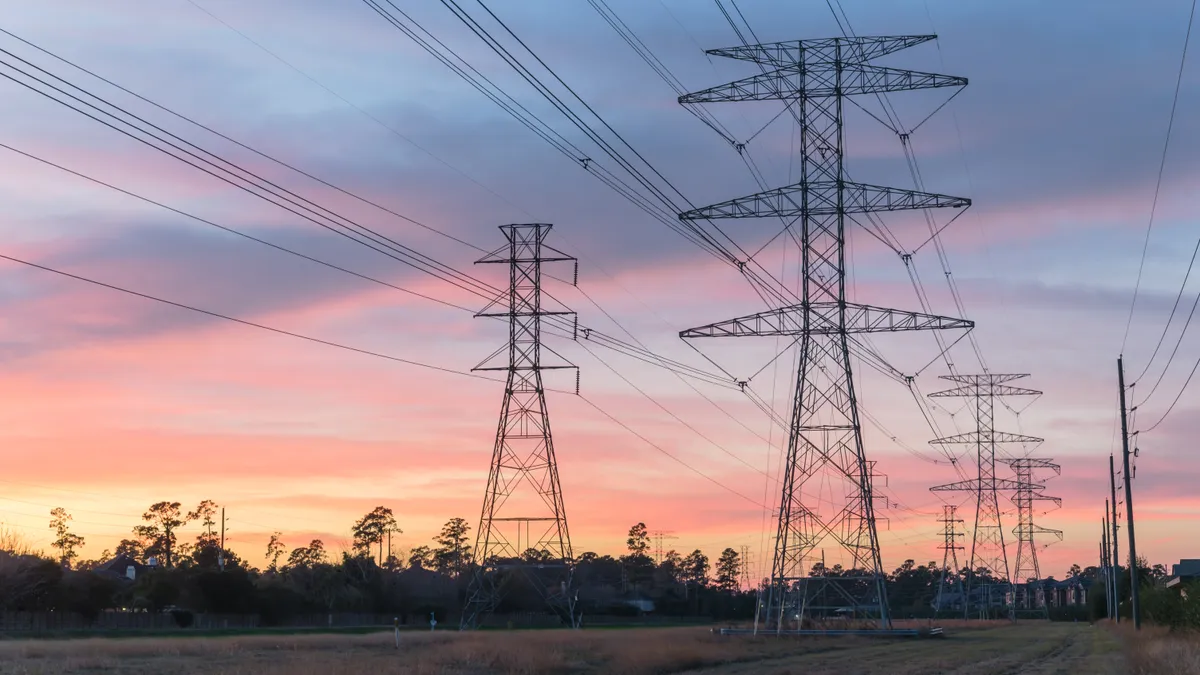Dive Brief:
- The Public Utility Commission of Texas should consider multiple metrics in the development of a grid reliability standard, stakeholders said in comments filed last week. Along with a traditional loss of load expectation (LOLE), commenters suggested looking at loss of load hours (LOLH), expected unserved energy (EUE), the value of lost load (VOLL) and other data points.
- Following Winter Storm Uri in 2021 state lawmakers directed the commission to develop a reliability standard to improve performance of the Electric Reliability Council of Texas grid.
- “One metric does not fully encompass the complexities of reliability events in today's power grids,” RMI told regulators. The independent research group also recommended regulators utilize energy efficiency, virtual power plants and a portfolio of distributed regional and interregional resources to boost reliability.
Dive Insight:
A variety of parties filed comments by the PUCT’s Wednesday deadline, broadly noting that a range of metrics may be necessary to improve reliability of the Texas grid.
“The reliability metrics considered by the Commission should be shaped to meet the needs of the ERCOT market and not be confined to a narrow set of traditional standards,” the grid operator said.
Utilities, system operators and regulators often rely on a 1-in-10 reliability standard that requires planning margins sufficient to ensure load shedding occurs only once in a decade. But power experts say this standard may no longer recognize the reality of today’s constrained electric grids, and requiring greater reliability means higher prices.
ERCOT proposed a process and framework for the development of a reliability standard that recommends a standard defined by a three-part framework tied to probabilistic reliability metrics of duration, frequency and magnitude.
The frequency component uses a traditional LOLE metric. But duration and magnitude are modified measures intended to place limits on any single loss of load event rather than a cumulative total in multiple events in a given period, ERCOT said.
RMI recommended using “a combination of metrics that provides a robust picture of these attributes,” possibly to include LOLE, loss of load events, LOLH, EUE, VOLL, and value at risk metrics.
“Each of these metrics attempts to quantify different characteristics of lost load events,” RMI said. VOLL should be included among metrics considered by the commission to increase transparency surrounding the costs and potential impact of reliability criterion, it said.
ERCOT is preparing work with a consultant to analyze VOLL, regulators said at the commission’s March 23 meeting.
London Economics, which specializes in market analysis, said Texas regulators should consider two types of metrics: those focused on the expected outage risks, including LOLH and EUE, and metrics “that focus on ... outage risk under extreme weather conditions,” such as Conditional Value at Risk.
“The reliability metric could be a hybrid ... or multiple standards that have to be complied with simultaneously,” the firm said.
NextEra Energy Resources told the commission it should consider LOLE, LOLH and EUE, “with an eye toward identifying a metric that considers a broad range of reliability impacts ... All of these metrics aid in understanding the impact of outages on the grid and end use consumers.”
“While including all three metrics in the ultimate reliability standard assessment may give a more complete picture of the system, it does come with added complexities,” NextEra added. “An initial thought is that a more robust demand curve would be needed in addition to determining if a seasonal component or annual would be better.”
The Office of Public Utility Counsel, which represents residential and small commercial customers, said all three metrics are “essential when considering development of a standard metric for the ERCOT grid.” The advocate added that it “foresees an additional metric (Impact) that measures the extreme nature of the weather and accompanying environmental conditions having a meaningful and immediate impact on both businesses and residents.”
Municipal utilities told regulators “more data is needed” before a reliability standard can be set, but that any impacts of a new standard on consumers must be considered.
“ERCOT is appropriately considering several different metrics,” the Texas Public Power Association said. “In evaluating different proposed standards, the Commission should ensure that, in addition to reliability, the standard also reflects the cost to consumers to ensure that a reliable grid does not become an unaffordable one.”
Reply comments are due April 5 and will be filed in the development project 54584 docket.















